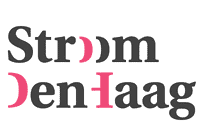Folkert de Jong, 'Dutch Mechanisms', 2016 foto: © Sander Foederer, courtesy Stroom Den Haag
Folkert de Jong 'Dutch Mechanisms', 2016
Location: Studio Dudok, Hofweg 1a, The Hague
Unveiling: Friday, July 1, 2016, 5:00 PM
On Friday, July 1, 2016, the new sculpture Dutch Mechanisms by Folkert de Jong was added to De Beeldengalerij in the center of The Hague. The sculpture draws on the murder of the De Witt brothers in 1672, which resulted from the power and leadership controversy between the republicans and the Orangist royalists and marked the end of the Dutch Republic. Through this depiction of a dark chapter in history, Folkert de Jong also establishes a connection with the present: power struggles and populism are timeless issues.
Folkert de Jong is interested in how history leaves traces in the collective (sub)consciousness. He finds that the dramatic murder of the De Witt brothers resonates with our time: "Even now, morality is elusive. Political, economic, and social unrest, war, and power struggles have increasingly influenced the Netherlands in recent decades. But just as it’s hard to attach a clear moral to the murder of the De Witt brothers—since what do we really know about those events?—it is also challenging today to form an opinion about the atrocities of our time. The facts provided by the media are complex and confusing. Nevertheless, it is useful to reflect on your own position. Would you be capable of condemning someone to death or participating in a lynching? To what extent do we ourselves engage in mechanisms of populism?"
De Jong became fascinated by the finger and tongue of the De Witt brothers, which are housed in the Hague Historical Museum. According to legend, the brothers were shot, stabbed, slaughtered, and partially eaten in front of the Hague Prison Gate before being hanged upside down. Body parts of the murdered brothers were taken as trophies and traded, including the finger and tongue that eventually ended up in the museum.
The artist transformed two life-sized plastic skeletons into bronze; symbols of transience, an important theme in 17th-century art. The skeletons appear to merge into one form. De Jong aims to transcend the literalness of the gruesome event.
De Jong scanned, printed, and then cast in bronze the finger and tongue of the De Witt brothers. They are the physical connection to the events of that time and represent speaking (with the tongue) and pointing (with the finger). De Jong: "The fact that only these two things remain makes me skeptical—it’s almost too good to be true. It makes me doubt their authenticity. Are they really from the brothers, or part of the myth-making? Some see the brothers as martyrs of 'True Freedom,' but why is there a need for this martyrdom today? They were supposedly murdered by Orangist supporters, but how can we judge that from our current perspective? And what is its relevance to our time and the power structures we live in?"
Folkert de Jong (1972, Egmond aan Zee) is known for his theatrical, narrative works that address themes such as war, greed, and power. He typically creates his sculptures in materials like styrofoam. Since 2012, he has
also worked in bronze, creating his first public artwork in this material, De Speler, for The Hague’s Koningsplein, on the invitation of Stroom. De Jong’s work is included in collections such as the Gemeentemuseum The Hague, Groninger Museum, Saatchi Collection in London, and Los Angeles County Museum of Art. Currently, Carin Goeijers is making a documentary about De Jong’s work.
PRESS
Villa La Repubblica, July 15, 2016
If then is now, July 4, 2016
Algemeen Dagblad.nl, June 28, 2016
Museumtijdschrift, June 28, 2016






